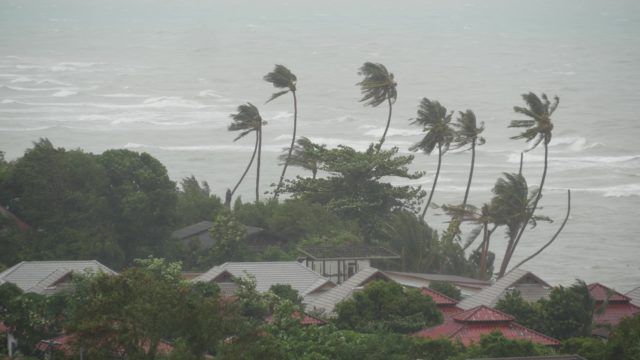Emerging markets were first out of the blocks on the reflation trade, particularly those with abundant natural resources. However, enthusiasm for the asset class has notably ebbed in recent months, as the pandemic has wreaked destruction on large economies such as India and Brazil. Can emerging markets find their feet once again?
Emerging markets were supposed to be the big winner from the reflation trade. They were leveraged to global economic recovery, commodity-rich and hadn’t taken on the debt burden of developed markets. They were also supposed to benefit from a sliding dollar, prompted by the US’s vast stimulus schemes.
It hasn’t quite worked out that way. Over the past six months, the average Global Emerging Market fund is up just 8.6%. This is behind the UK, Europe and North American sectors. Of the major equity markets, only Japan has been weaker.
Strong headwinds
There have been a number of headwinds. The first is the relative weakness of China. After a strong run in 2020, led by China’s technology giants, the Chinese markets have been far weaker in 2020. They have grown to become a dominant part of the MSCI Emerging Market index and, by extension, many active funds, and their weakness has therefore exerted a significant drag on the emerging market asset class as a whole.
The second is the resurgence of the virus in many large emerging markets, notably Brazil and India. Rising case loads have forced further economically damaging lockdowns. This is widening the gap on economic recovery between emerging and developed markets.
Silvia Dall’Angelo, senior economist, at the international business of Federated Hermes says: “Divergences have been particularly pronounced between emerging and developed economies, reflecting different abilities to tap the necessary resources to contain the pandemic and support the recovery.”
This hurt stock markets in both India and Brazil from February through to April, at a time when the MSCI World index continued to power ahead. Both have started to recover since and India now appears to have a grip on the outbreak with case numbers down significantly.
The final problem may be that the dollar hasn’t been as lacklustre as investors had hoped. The dollar has been relatively weak, which is good for emerging markets, but many had hoped for more given the vast stimulus packages put in place by the Biden administration. There is also a concern that rising inflation may force higher rates in the US, which could start to push the Dollar in the other direction.
Better signs ahead
But there should be better signs ahead for emerging markets. While the pandemic has been particularly awful for some emerging markets, it may leave them in a stronger position in the longer term.
Pimco head of emerging markets portfolio management Pramol Dhawan points out that emerging markets on average have younger, less vulnerable populations, with just 7.4% age 65 and older, compared with 18.4% in developed markets.
He adds: “In many countries, these younger populations have already been infected at high rates, creating a natural immunity – estimated at over 50% in many Latin American countries – which serves as a bridge of sorts across a period of belated vaccine rollouts, lowering the risk of contagion to the most vulnerable segment of society.”
Commodity prices also still look well-supported, which should help many resources-rich emerging markets. The global infrastructure trade is still in its infancy and should continue to create demand for resources at a time when supply is still constrained by production difficulties.
Valuations are on their side
There are also plenty of well-valued opportunities largely overlooked by global investors that have either been narrowly growth focused (in 2020), or narrowly value focused (in 2021). In aggregate, the price to earnings ratio for the MSCI Emerging Markets index is far lower than for the MSCI World (21.55x versus 31.44). Emerging markets have a higher dividend yield and lower price to book ratio.
Active managers have been able to side-step some of the worst-hit areas. UBP, for example, has avoided some parts of Africa or Latin America, preferring the ‘safer’ markets of North Asia. The team is focused on areas of the market that have been left behind.
UBAM – Positive Impact Emerging Equity fund co-manager Mathieu Nègre says: “The healthcare sector did very well in the spring of last year, but didn’t benefit from the very strong rebound we saw later. We see some value in that sector.”
JP Morgan Emerging Markets Investment trust manager Austin Forey is also looking at healthcare. He says: “The Chinese healthcare opportunity remains very interesting and very large.” He hasn’t changed the portfolio significantly in response to the current market climate. TSMC remains the largest position, having been in the portfolio for over 20 years.
Areas of risk
Nevertheless, Dhawan at Pimco believes there are still areas of risk, notably among tourist-dependent economies such as Thailand, Turkey and the Dominican Republic.
“But even here, regional differences will be important. Turkey, the Dominican Republic, and Central Europe are set to benefit from proximity to developed economies with high vaccination rates, while Southeast Asia looks set to lag as vaccination progress in their two main sources of regional tourism – China and Japan – is slow.”
The withdrawal of Chinese stimulus remains a potential stumbling block for the otherwise well-placed Asian economies. China has already started to normalise policy, wary of raising its debt burden. This poses a threat to economic growth should virus cases rise. Elsewhere there may be social unrest as support mechanisms are withdrawn.
Dhawan says: “Although higher rates of natural immunity across large swaths of Latin America and Central Europe compensate for slower vaccination campaigns, full economic re-openings will be slower and fiscal stresses greater than in other emerging markets.”
However, many of these risks are already reflected in the price of emerging market assets. The biggest problem may be that risk appetite doesn’t revive and, in spite of their compelling growth and valuation characteristics, they struggle to draw in cautious investors. This, perhaps more than anything else, has held emerging markets back in recent years.





![Despite headwinds, ESG continues to perform iStock-1186178292_1920x1080[38]](https://s34456.pcdn.co/wp-content/uploads/2021/08/iStock-1186178292_1920x108038-156x111.png)











